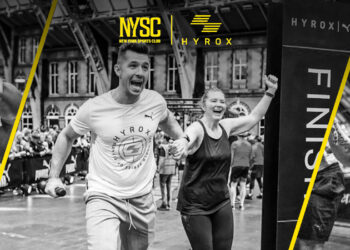How turning social events into powerful tools for member engagement is easier than you think.
Social programming has created a new avenue for clubs to increase member engagement and retention. Involving members in activities outside of traditional workouts creates positive and social environments that can include multiple generations.
In the latest Thought Leaders digital roundtable, Amanda Valle, the messaging manager at Club Northwest; Erica Hubber, the activities director at Village Health Clubs and Spa; Jessica Gravenhof, the youth programming director at the Rochester Athletic Club; and Christine Morris, the director of membership at Club Greenwood discussed how their respective clubs have implemented social programming and the benefits they’ve noticed.
The key to creating successful social programming is being attentive to member’s feedback. Taking information from current members, prospective members and internal staff is a great way to determine what events members would be interested in attending.
Determining what events to implement can be difficult as not all ideas can be made a reality. Designing a system to further develop social programming ideas and reflect on completed events has been beneficial for Club Northwest.
“Before we launch anything, we have a worksheet that we use called a quantified events worksheet,” said Valle. “It breaks down what we want to do. What’s our intended outcome? After the event is done, we have a way to keep track of how the event went and we ask ourselves if our goals were met, what worked and what didn’t work. It’s a way for us to always be evolving with our members.”
The quantified events worksheet also serves as a way for Club Northwest to reflect on previous ideas. Keeping a record of ideas that never came to fruition or events that did not perform as well as intended allows the club to brainstorm new ideas. The evaluations serve as a great starting point when considering what type of an event they would like to run in the future.
Not all social programming ideas have to start from scratch. Engaging pre-existing groups inside of your club is a great way to introduce social programming as the members already enjoy these gatherings. Take advantage of your club’s existing foundation and use it to engage more members and help them find their niche.
An easy way to implement more social programming is to look at the talent within your club. Some instructors – or even staff members – may have a special niche that they thrive in and may be willing to lead a special program, activity or event.
“Our events coordinator has reached out to specific instructors who already have that social club within a club,” said Morris. We ask ourselves, what do we have going on internally that we utilize?”
Social programming, like a happy hour by the facility’s pool, encourages members to engage with the club outside of traditional fitness. It is also a great opportunity to gain members. “Our happy hours are lead generating because the members can bring guests to introduce them to the club and our social network,” said Hubber.
However, when it comes to social programs, you don’t have to reinvent the wheel at your club. Fitness-oriented programs still contain social aspects that can benefit clients of all ages.
Pickleball has become a popular multigenerational trend due to its unique take on cardio and easy to learn rules that make it accessible for all members. The sport engages members through both casual play and competitive tournaments. The Rochester Athletic Club opened 12 pickleball courts last year and has seen an uptick in usage by all of its members regardless of age.
Similarly, Village Health Clubs and Spa has a partnership with Troon Golf in order to help its members explore the outdoor sport. This partnership allows beginners to learn how to play golf while meeting others of various ages. After the COVID-19 pandemic, the program has noticed an increase in younger members joining in because it allows them to exercise, socialize, and have fun. Golf meets the needs of younger members while simultaneously providing exercise to its typical crowd of older clientele.
Overall, each of the panelists stressed that member feedback and keeping track of trends both within your club and on social media is key to designing social programming. The focus of these programs is not only to make connections but to add value to the memberships outside of the facilities.
“I think it’s just having your finger on the pulse as far as what different demographics need,” advised Morris. “The health and wellness industry has a wide range of activities, so just make sure that you’re changing with the times










